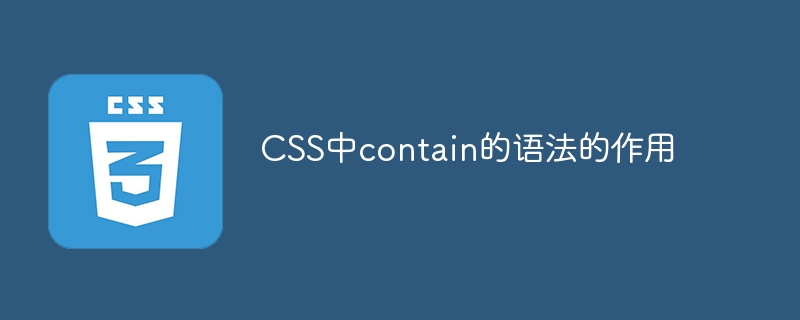

The role of the contain syntax in CSS
In CSS, contain is a very useful attribute that can affect the layout and rendering of elements. Its main function is to tell the browser how to handle the content of the element and control the relationship between the element and other elements.
The contain attribute has four optional values: none, strict, content and size. Below we discuss the role of each value in detail and provide corresponding code examples.
Sample code:
.container {
contain: none;
width: 200px;
height: 200px;
border: 1px solid black;
overflow: hidden;
}
.text {
width: 300px;
height: 300px;
background-color: red;
}In the above code, the width and height of the container div are both 200 pixels, and overflow:hidden is set. The width and height of the text div are both 300 pixels, which exceeds the size of the container. Because the contain attribute value is set to none, the text will overflow outside the container.
Sample code:
.container {
contain: strict;
width: 200px;
height: 200px;
border: 1px solid black;
overflow: hidden;
}
.text {
width: 300px;
height: 300px;
background-color: red;
}In the above code, the width and height of the container div are still 200 pixels, and overflow:hidden is set. But because the contain attribute value is set to strict, the browser will automatically adjust the size of the text div to ensure that it does not overflow the boundaries of the container.
Sample code:
.container {
contain: content;
width: 200px;
height: 200px;
border: 1px solid black;
overflow: hidden;
}
.text {
width: 300px;
height: 300px;
background-color: red;
}In the above code, the width and height of the container div are still 200 pixels, and overflow:hidden is set. However, because the contain attribute value is set to content, the text div will still overflow outside the container, because the browser only considers the size of the element itself and does not adjust the size of the child elements.
Sample code:
.container {
contain: size;
width: 200px;
height: 200px;
border: 1px solid black;
overflow: hidden;
}
.text {
width: 300px;
height: 300px;
background-color: red;
}In the above code, the width and height of the container div are still 200 pixels, and overflow:hidden is set. But because the contain attribute value is set to size, the browser will resize the text div so that it fits the size of the container.
Summary
The role of the contain attribute in CSS is to control how the content of an element is laid out and the relationship between the element and other elements. By using the contain attribute, we can achieve more precise layout and better rendering effects. Depending on the value, we can control overflow, resizing, and the effect of child elements. Understanding and skillfully using the contain attribute will help us better control and optimize the layout of web pages.
The above is the detailed content of The role and syntax of the contain attribute in CSS. For more information, please follow other related articles on the PHP Chinese website!